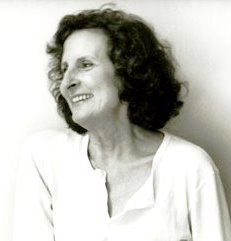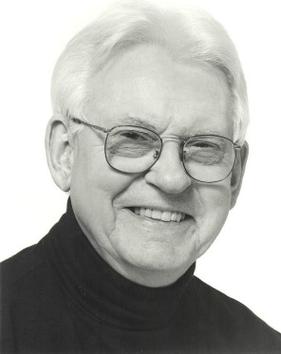
Mercier Philip "Merce" Cunningham was an American dancer and choreographer who was at the forefront of American modern dance for more than 50 years. He frequently collaborated with artists of other disciplines, including musicians John Cage, David Tudor, Brian Eno, and graphic artists Robert Rauschenberg, Bruce Nauman, Andy Warhol, Roy Lichtenstein, Frank Stella, and Jasper Johns; and fashion designer Rei Kawakubo. Works that he produced with these artists had a profound impact on avant-garde art beyond the world of dance.
Judson Dance Theater was a collective of dancers, composers, and visual artists who performed at the Judson Memorial Church in Greenwich Village, Manhattan New York City between 1962 and 1964. The artists involved were avant garde experimentalists who rejected the confines of Modern dance practice and theory, inventing as they did the precepts of Postmodern dance.
Postmodern dance is a 20th century concert dance form that came into popularity in the early 1960s. While the term "postmodern" took on a different meaning when used to describe dance, the dance form did take inspiration from the ideologies of the wider postmodern movement, which "sought to deflate what it saw as overly pretentious and ultimately self-serving modernist views of art and the artist" and was, more generally, a departure from modernist ideals. Lacking stylistic homogeny, Postmodern dance was discerned mainly by its anti-modern dance sentiments rather than by its dance style. The dance form was a reaction to the compositional and presentational constraints of the preceding generation of modern dance, hailing the use of everyday movement as valid performance art and advocating for unconventional methods of dance composition.
Carolyn Brown is an American dancer, choreographer, and writer. She is best known for her work as a founding member of the Merce Cunningham Dance Company, and was his leading dancer for twenty years.

The American Dance Festival (ADF) under the direction of Executive Director Jodee Nimerichter hosts its main summer dance courses including Summer Dance Intensive, Pre-Professional Dance Intensive, and the Dance Professional Workshops. It also hosts a six-week summer festival of modern dance performances, currently held at Duke University and the Durham Performing Arts Center in Durham, North Carolina. Several site-specific performances have also taken place outdoors at Duke Gardens and the NC Art Museum in Raleigh, NC.

Trisha Brown was an American choreographer and dancer, and one of the founders of the Judson Dance Theater and the postmodern dance movement. Brown’s dance/movement method, with which she and her dancers train their bodies, remains pervasively impactful within international postmodern dance.
Lillian Elaine Summers was an American choreographer, experimental filmmaker, and intermedia pioneer. She was a founding member of the original workshop-group that would form the Judson Dance Theater and she significantly contributed to the interaction of film and dance, as well as the expansion of dance into other related disciplines, such as visual art, film, and theater. She fostered the expansion of performing dance in new, often outdoor locations. Her movement approach Kinetic Awareness offers a comprehensive perspective on human movement and dance.
Rachel Rosenthal was a French-born interdisciplinary and performance artist, teacher, actress, and animal rights activist based in Los Angeles.
Deborah Hay is an American choreographer, dancer, dance theorist, and author working in the field of experimental postmodern dance. She is one of the original founders of the Judson Dance Theater. Hay's signature slow and minimal dance style was informed by a trip to Japan while touring with Merce Cunningham's company in 1964. In Japan she encountered Noh theatre and soon incorporated nô's extreme slowness, minimalism and suspension into her post-Cunningham choreography. Sometimes she also imposed stressful conditions on the dancers, as with her "Solo" group dance that was presentation at 9 Evenings: Theatre and Engineering.
Lucinda Childs is an American postmodern dancer and choreographer. Her compositions are known for their minimalistic movements yet complex transitions. Childs is most famous for being able to turn the slightest movements into intricate choreography. Through her use of patterns, repetition, dialect, and technology, she has created a unique style of choreography that embraces experimentation and transdisciplinarity.
Margaret Jenkins is a postmodern choreographer based in San Francisco, California. She was a Guggenheim Fellow in 1980 and in 2003, San Francisco mayor, Willie Brown, declared April 24 to be Margaret Jenkins Day.
Daniel Arsham is an American artist. He lives and works in New York City.
The Foundation for Contemporary Arts (FCA), is a nonprofit based foundation in New York City that offers financial support and recognition to contemporary performing and visual artists through awards for artistic innovation and potential. It was established in 1963 as the Foundation for Contemporary Performance Arts by artists Jasper Johns, John Cage, and others.

Jonah Bokaer is an American choreographer and media artist. He works on live performances in the United States and elsewhere, including choreography, digital media, cross-disciplinary collaborations, and social enterprise.

David Vaughan was a dance archivist, historian and critic. He was the archivist of the Merce Cunningham Dance Company from 1976 until the company was disbanded in 2012.
Barbara Dilley (Lloyd) (born 1938) is an American dancer, performance artist, improvisor, choreographer and educator, best known for her work as a prominent member of the Merce Cunningham Dance Company (1963-1968), and then with the groundbreaking dance and performance ensemble The Grand Union, from 1969 to 1976. She has taught movement and dance at Naropa University in Boulder, Colorado, since 1974, developing a pedagogy that emphasizes what she calls “embodied awareness,” an approach that combines dance and movement studies with meditation, “mind training” and improvisational composition. She served as the president of Naropa University from 1985 to 1993.
Sally Gross was an American postmodernist dancer.
Sarah Michelson is a British choreographer and dancer who lives and works in New York City, New York. Her work is characterized by demanding physicality and repetition, rigorous formal structures, and inventive lighting and sound design. She was one of two choreographers whose work was included in the 2012 Whitney Biennial, the first time dance was presented as part of the bi-annual exhibition. Her work has also been staged at The Walker Art Center, Jacob’s Pillow Dance Festival, The Kitchen, and the White Oak Dance Project. She received New York Dance and Performance awards for Group Experience (2002), Shadowmann Parts One and Two (2003), and Dogs (2008). She has served as associate director of The Center for Movement Research and associate curator of dance at The Kitchen. Currently choreographer in residence at Bard's Fisher Center, she is the recipient of their four-year fellowship to develop a commissioned work with Bard students and professional dancers.

Bénédicte Pesle was a French arts patron. She was known for having introduced American avant-garde artists of stage, music, dance, and the visual arts to France, and was instrumental in the European careers Merce Cunningham, Robert Wilson, Philip Glass, and Trisha Brown, amongst others.
Justin Tornow is an American dancer, choreographer, dance scholar, and dance teacher. She is the founder and artistic director of COMPANY, a co-founder and co-organizer of Durham Independent Dance Artists, former board president of the North Carolina Dance Alliance, and producer of the PROMPTS art series in Durham, North Carolina. Tornow is trained in Cunningham technique and is a New York Public Library Research Fellow in Cunningham dance pedagogy. She serves on the faculty at the University of North Carolina at Greensboro, Elon University, and the American Dance Festival.





